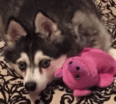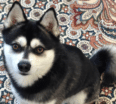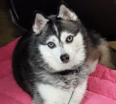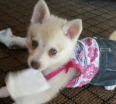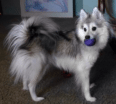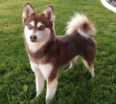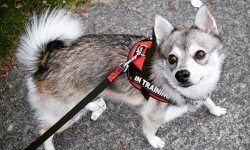Differences Between a Miniature Husky and an Alaskan Klee Kai
If you’re googling and reading up on the Alaskan Klee Kai online, then chances are, you’re probably drawn to their miniature husky-like characteristics—their striking facial mask and distinguishable fur coloration. But don’t let their look-a-like appearances fool you, the Miniature Husky is in fact, a completely different dog breed—one that you’re most likely very familiar with, the Siberian Husky. That’s right, Miniature Huskies are simply smaller than average Siberian Huskies.
Wondering which of the two breeds would make a better pet? To answer that, we’d have to take a look at some of the key differences between them.
Miniature Husky Difference #1: Their Origins
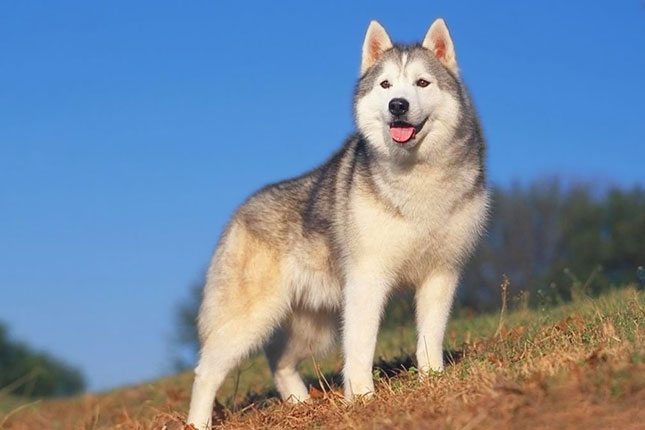
Now, there are many potential problems with this—first off, the two dogs used for the breeding are typically only chosen for their small size (as that is what is sought-after), instead of more important factors, such as health. While they may have the “small gene,” are the dogs really of breeding quality? Have they received any medical tests? Were their parents prone to any medical conditions and illnesses?
Secondly, Miniature Husky breeders typically breed these dogs for financial gains whereas Alaskan Klee Kai breeders (assuming that they are ethical) take many things into consideration before selecting their two dogs, in attempts to improve the breed as a whole.
Miniature Husky Difference #2: Their Temperaments
Although the two breeds may look very similar, their temperaments can be thought of as day and night. Despite the fact that they look the same on the outside, their personalities can be very different.
Often described to be cat-like, Alaskan Klee Kai are typically shy and reserved by nature and do not enjoy the presence of strangers, a trait which makes them excellent watch dogs. On the other hand, Siberian Huskies tend to be friendly and outgoing with everyone—heck, they’d probably lick the faces of everyone that they meet if they could. Here’s a tip—don’t count on a Miniature Husky to alert you of someone in the house, it wouldn’t be surprising for them to be busy asking for a treat from the thief himself!
Miniature Husky Difference #3: Their Physical Build
If you’re looking at the Alaskan Klee Kai and the Miniature Husky at a distance, it’s true that it’d be hard to discern any differences between the breeds. But take a few steps closer and you’d notice that the former is actually leaner, taller and has more of a wedge shaped face.
Although these distinctions may be small, they reinforce the fact that they are in fact, two separate breeds of dog.
Miniature Husky Difference #4: They Have Different Exercise Needs

A tired dog is a happy dog—the opposite is also true. Don’t expect to keep a Husky in your home without dedicating the necessary time for his needs; he will let you know about his pent-up energy by chewing and destroying your beloved belongings.
In contrast the Alaskan Klee Kai, which was bred as a companion dog, are considerably less challenging for the average family. Don’t get me wrong, they are still bundles of energy that require long walks everyday, but generally speaking—they do not need hours of running to go home tired and satisfied.
Miniature Husky Difference #5: They Shed More
While Alaskan Klee Kai owners would all tell you that they own a crazy shedding machine, the fact is—Siberian Huskies are even more talented at dispersing their fur. Gifted in the art of shedding, Huskies require constant grooming in order to remain comfortable, even more so than their leaner counterparts.
Similar to the Alaskan Klee Kai, they also blow their coats twice a year—during which they spread strands of joy throughout your home for a period of up to six weeks. Due to the facts that they are generally fluffier and that their coats also tend to be thicker than that of the Alaskan Klee Kai, it’s not all that surprising that they’d be the ones to shed more fur.


